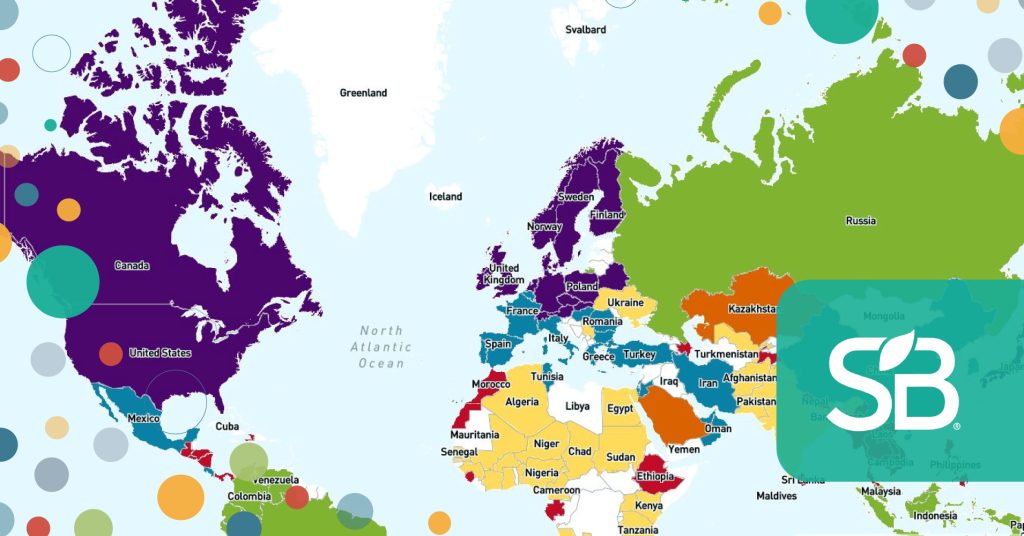WWF Identifies Tailored, Local Strategies for Transforming Global Food System
3 min read
The Great Food Puzzle, a new tool and
research published by WWF, helps identify the most appropriate actions on a
national basis for fixing the many flaws in our global food system. The report highlights that while food systems — the complex network of
activities that involves the production, processing, transportation and
consumption of food — have major global impacts on nature and climate change, they can only be made sustainable with local solutions.
In the first global study of its kind, WWF analyzed more than 100 countries and
classified them into six different Food System Types — based on their
environmental and socioeconomic characteristics — and ranked the highest-impact
actions in each. The inclusion of environmental factors — a critical
consideration, given food systems’ widespread impact on nature and total
dependence on a functioning natural world — sets the study apart from other food
system typologies. For example, the need to develop nature-positive supply
chains
is identified as a priority in one group of countries — which could most
accelerate impact by learning from and scaling existing approaches.
“Food systems are extremely complex and are shaped by lots of factors including
cultural heritage, values and local contexts,” said Brent
Loken, Global Food Lead Scientist at
WWF. “That means there are no silver bullets that will work everywhere and
reverse the devastating impact that current food systems have on nature and
human health. The Great Food Puzzle approach helps all stakeholders to identify
science-based actions based on local context, or place-based
solutions,
that will deliver the biggest wins for people and planet in the shortest time.”
While there is no single set of policy interventions that should be applied
globally, the research revealed a consistent need across all countries to
optimize land use and restore
biodiversity,
improve education on healthy and sustainable
diets,
and to redesign financial subsidies and incentives.
Regenerative ag: Practical strategies for sustainable farming with long-term positive impacts
Download SB’s new guidebook — “Regenerative Agriculture for a Resilient Future” — to dig into the core principles, comprehensive strategies and collaborative approaches that make regenerative agriculture a win-win solution for future-proofing our food system for the long term.
These actions have high-impact potential across all Food System Types (named 1-6
to avoid biases or preconceptions), but they are not necessarily the top three
actions recommended for all countries. Although there are similarities, there are
notable differences between priority actions in different Food System Types.
-
For instance, the greatest potential for adopting high-tech methods is
in Type 4 countries — including China, Mexico, South Africa,
Spain and UAE. There is already significant industrialization in
these food systems, but they also face the highest levels of water
risk
— particularly, with forecast climate impacts in mind. High-tech methods
that can preserve access to clean and safe water, such as the use of
controlled environments for food production or desalinating salt water for
irrigation, are likely to be of great importance. -
In Type 5 countries — including Germany, Japan, the
Netherlands, UK and US — strengthening existing commitments
and implementation has higher potential. These countries frequently have
regulations or agreements in place, but implementation is often lacking.
Rather than developing new solutions, delivering on existing commitments
will be most impactful. -
Meanwhile, there is higher potential in promoting traditional foods (ex:
nuts, legumes and nutri-cereals) in Type 2 (including Ethiopia, the
Philippines and Viet Nam) and Type 4 countries — many of which are
shifting away from healthy and sustainable food cultures toward increased
consumption of ultra-processed and animal-based foods.
The 6 Food System Types and example strategies
“The Great Food Puzzle approach will help to accelerate the incredible food
system transformation that is already underway — there are many examples of
countries already applying the highest-impact actions,” Loken said. “By finding
place-based solutions and building coalitions of actors who can learn from each
other and share solutions and stories of success, we have the opportunity to
create healthy and sustainable food systems for all.”






